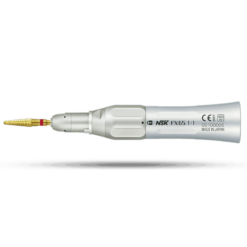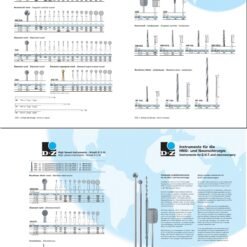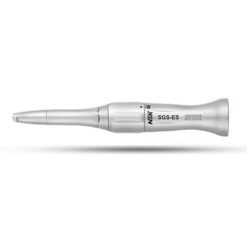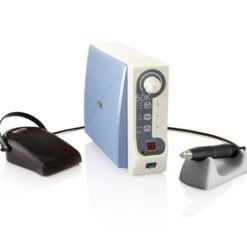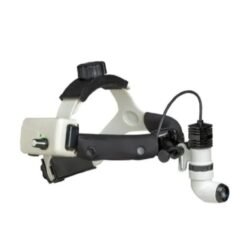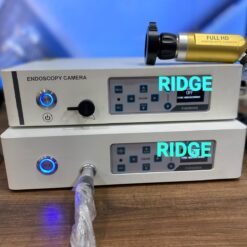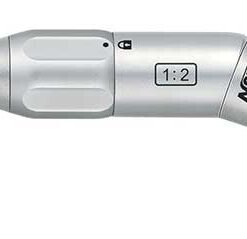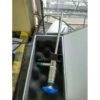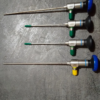A) Hawk 4mm 0 Deg OtoEndoscope B) Hawk 4mm 30 Deg OtoEndoscope
C) Hawk 2.7mm 0 Deg OtoEndoscope D) Hawk 2.7mm 30 Deg OtoEndoscope
E) Hawk 2.7 mm 0 Deg Tympanoscope F) Hawk 2.7mm 30 Deg Tympanoscope
G) Hawk 3mm 0 Deg Tympanoscope H) Hawk 3mm 30 Deg Tympanoscope
Otoendoscopy describes the use of Hopkins rod telescopes to examine the ear. Over the past two decades, the role of endoscopes has evolved from a diagnostic tool in the office to the operating room, where Hopkins rod and distal chip scopes are being used to perform routine and complex middle ear and mastoid surgery. Advancements in endoscopic ear surgery techniques have increased interest in endoscopes for in-office otologic procedures. Compared with binocular microscopy, the endoscope provides enhanced depth of field and visualization of the hidden recesses of the middle ear (and mastoid) using small surgical corridors. These advantages are leveraged in the office setting for diagnosing, documenting and managing otologic pathology, even more now during the COVID-19 pandemic. In this review, we describe the indications, techniques and potential complications of office-based otoendoscopy and endoscopic ear surgery.


